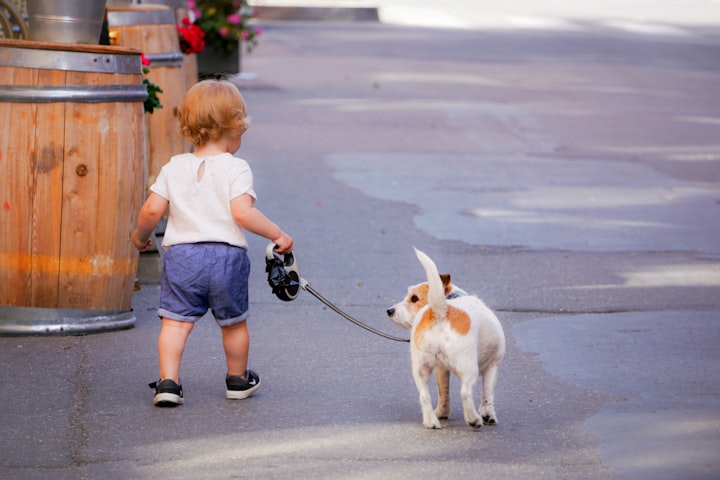How to Walk 2 Dogs Together
Tips for a Successful and Enjoyable Experience

Introduction (50 words):
Walking two dogs at the same time can be a wonderful way to provide exercise, mental stimulation, and quality bonding time for both you and your furry companions. However, it can also present its challenges. With proper planning, training, and the right techniques, you can turn your walks into enjoyable and stress-free experiences. In this article, we will explore effective tips for walking two dogs together.
Individual Training and Leash Skills:
Before attempting to walk two dogs together, it's crucial to train each dog individually to master leash manners and basic commands. This foundation will help set the stage for successful group walks. Ensure that both dogs are comfortable walking on a leash, respond to commands like "sit," "stay," and "heel," and have a good understanding of leash walking etiquette. Individual training sessions will establish a sense of control and focus for each dog, making it easier to manage them both on a joint walk.

Gradual Introduction and Familiarization:
Introducing two dogs to each other in a controlled and gradual manner is essential before attempting to walk them together. Start by allowing them to interact in a neutral environment, such as a park or backyard, while keeping them on separate leashes. Observe their behavior and ensure that they are comfortable with each other's presence. Repeat this process multiple times, gradually increasing the duration and intensity of their interactions. This step allows them to build trust, establish boundaries, and become familiar with each other's walking styles.

Use Appropriate Leashes and Equipment:
Selecting the right leashes and equipment is crucial for walking two dogs together safely and comfortably. Choose sturdy leashes that provide sufficient control without causing discomfort. Dual-leash couplers or double-ended leashes can be useful for managing two dogs simultaneously. These tools help prevent tangling and allow for better control. Additionally, consider using harnesses instead of collars, as they distribute pressure more evenly and reduce the risk of injury or discomfort. Make sure the equipment is properly fitted for each dog to ensure their comfort and safety during the walk.

Establish a Walking Order :
Designating a walking order for your dogs can help establish a sense of structure and prevent chaos during walks. Determine which dog will walk beside you or in front and consistently enforce this order. This helps reinforce their understanding of their position and reduces the likelihood of leash tangling or pulling. Maintaining consistency in the walking order will avoid confusion and ensure that you maintain control. However, it's important to periodically switch the walking order to prevent one dog from becoming dominant or overly dependent on the other.

Maintain Focus and Be Attentive:
When walking two dogs together, it's crucial to stay focused and attentive to their behavior and surroundings. Watch for any signs of tension, aggression, or discomfort and address them promptly. Be mindful of potential distractions, such as other dogs, people, or traffic, and redirect their attention when needed. Keep a watchful eye and be prepared to handle any situation that may arise during the walk. Staying alert and engaged will ensure a safe and pleasant walking experience for both dogs and allow you to guide them effectively.

Practice Loose Leash Walking:
Encouraging both dogs to walk on a loose leash is essential for a smooth and enjoyable walk. This means they should stay by your side without pulling or dragging you along. Use positive reinforcement techniques, such as treats and praise, to reward them for walking calmly and maintaining slack in the leash. If either dog starts to pull, stop walking and wait for them to return to your side before continuing. Consistency and patience are key






Comments
There are no comments for this story
Be the first to respond and start the conversation.